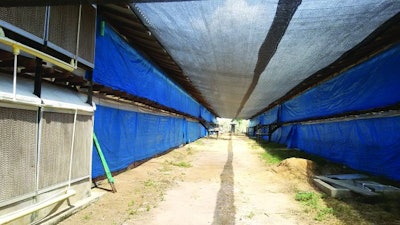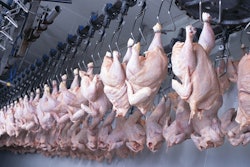
Transformative Facilitation is a way of working that focuses attention on minimizing or eliminating the obstacles that workers may encounter in terms of their contribution, connection and equity. It is as applicable to the poultry processing sector as it is to any other industry.
By focusing on removing those obstacles that stop workers doing their jobs or achieving satisfaction, worker equity is enhanced. Achieving this working environment favors creativity, innovation and enthusiasm, encouraging the growth of all participants.
In applying Transformative Facilitation, it is important to fully understand the challenges that a group of workers may face, who makes up that group, the critical path that needs to be followed and the objectives to be achieved.
Where poultry processing is concerned, this working methodology could easily be applied to reduce, for example, the physical damage that can occur during preslaughter.
Who makes up the work group?
Who might make up the work group? Those involved in raising the birds prior to slaughter. This group needs to be fully aware of all the details and microdetails necessary to successfully prepare the birds for harvest. While their role extends throughout the whole rearing period, nutritionists would also need to be involved in the preslaughter work group. The logistics team, with its responsibility for organizing the harvest, trucks and forklift trucks, will also need to be included.
Methodology
All the variables that contribute to each preslaughter activity must be thoroughly understood.
For example, during grow out, the rearing team needs to ask themselves whether birds have received the right amounts and the right quality of feed. Was management of the birds compliant with established procedures, and did the house’s equipment work well?
The logistics team might want to examine whether trucks arrive at and leave farms on time. Are trucks fully equipped to ensure that the birds travel in comfort, and is the truck platform in a good state of repair?
The responses to these questions may vary depending on climate and individual circumstances of the broiler shed. For example, in hot climates, where a house may not be surrounded by trees, it may be necessary to erect an awning, offering shade to both workers and birds when the latter are removed from the house.
Does the harvesting team have all that it needs to perform optimally and not tire during the shift?

Critical path
At this stage it is essential whether the feed withdrawal rules have been correctly complied with or not.
Are there enclosures and, if so, is there a system to move them? Should there be no enclosures, the harvesting team must walk slowly to not stress the birds.
If birds are being captured at night, when the house will be dark, the harvesting teams should wear night vision goggles. An alternative option is to use mobile lamps that project blue, red or green light. These must be placed strategically around the house to ensure that all work areas are illuminated.
Where caging is concerned, ergonomics should be fully considered so that workers do not tire quickly with a consequent drop in performance.
Birds must be handled with care to prevent any harm coming to them.
All cages must contain the same number of birds, and they must be in a good state of repair. There can be no splits or raised areas that could harm the birds. Cage height must reflect the size of the birds being harvested.
Loading the trucks must be carried out quickly, but with enough care to prevent the birds being harmed or the workers tiring too quickly. If protocols are followed correctly, unproductive time will be minimized.
Truck drivers must ensure that caged birds are handled in a way that complies with welfare legislation. Correct handling of containers will also help to guarantee their useful life.
If the above methodology is carefully followed, the number of rejected birds can be reduced, helping to reach the objective of minimizing waste and raising production.















